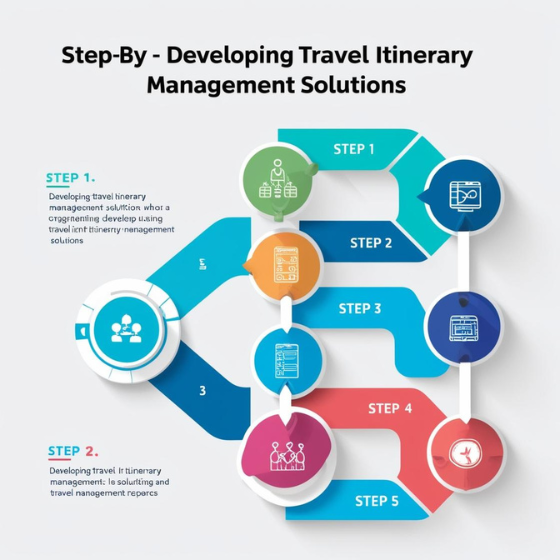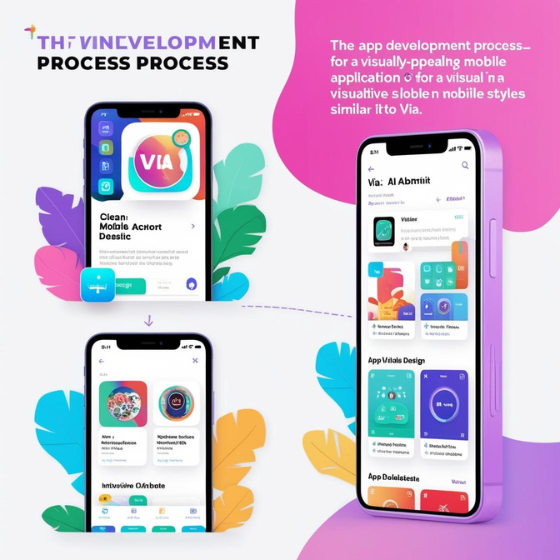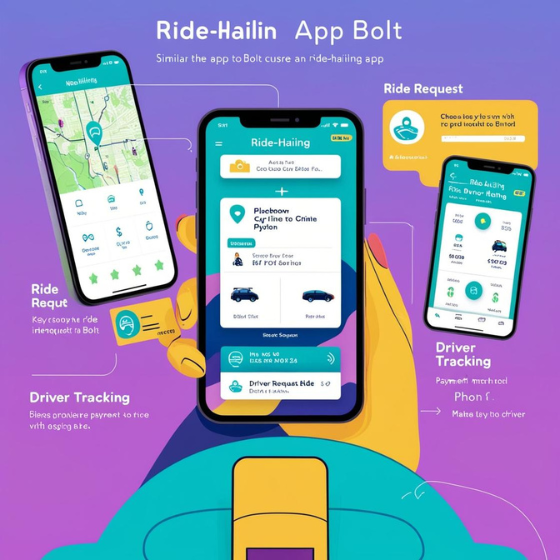How to Develop Travel Itinerary Management Solutions
Travel itinerary management solutions have become indispensable tools for both travelers and businesses in the travel industry. These platforms streamline trip planning, organization, and execution, enabling users to enjoy hassle-free journeys while businesses enhance customer satisfaction and operational efficiency.
In this blog, we will explore the key considerations and best practices for developing robust travel itinerary management solutions.
Why Develop Travel Itinerary Management Solutions?
The demand for efficient travel management tools is rising as travelers seek convenience and personalization. Here are some reasons why developing such a solution is beneficial:
1. Meeting Market Demand
More individuals and organizations rely on digital platforms to simplify travel planning, creating a growing market for innovative tools.
2. Enhancing Customer Satisfaction
Streamlined itineraries reduce the stress of travel, leading to better experiences and increased loyalty.
3. Driving Business Growth
By offering travel itinerary solutions, businesses can tap into new revenue streams and gain a competitive edge.
Essential Features of Travel Itinerary Management Solutions
To create a platform that meets user expectations, consider including the following features:
1. Comprehensive Itinerary Planner
Enable users to organize flights, accommodations, activities, and transportation in one central location.
2. Real-Time Updates
Provide automatic updates for flight delays, gate changes, and other itinerary modifications.
3. Multi-Device Accessibility
Ensure seamless syncing across smartphones, tablets, and desktops for on-the-go access.
4. Customizable Options
Allow users to personalize their itineraries by adding preferences such as dietary needs, preferred travel times, or activity choices.
5. Offline Availability
Include offline functionality to ensure users can access their itineraries even without an internet connection.
6. Secure Payment Integration
Integrate secure payment gateways for booking and expense tracking, providing a smooth and trustworthy experience.
7. Personalized Recommendations
Use AI and machine learning to suggest tailored activities, restaurants, or attractions based on user preferences.
Steps to Develop Travel Itinerary Management Solutions
Creating a successful platform involves thoughtful planning and execution. Follow these steps to bring your idea to life:
Step 1: Understand Your Audience
Identify the target users of your platform. Are you building for solo travelers, families, corporate clients, or travel agencies? Understanding their needs will help shape your solution.
Step 2: Define Core Features
Prioritize essential features such as itinerary organization, real-time notifications, and payment integration. Add advanced functionalities based on user demands.
Step 3: Choose the Right Technology Stack
Select technologies that ensure scalability, security, and smooth performance:
- Frontend: React.js, Vue.js for responsive interfaces.
- Backend: Node.js, Python (Django) for efficient data handling.
- Database: MongoDB, PostgreSQL for secure and scalable storage.
Step 4: Design a User-Centric Interface
Focus on simplicity and usability. Employ UX/UI design best practices to create intuitive layouts that make navigation effortless.
Step 5: Integrate APIs
Leverage APIs to enrich your platform with real-time data from airlines, hotels, car rentals, and map services.
Step 6: Ensure Data Security
Implement robust encryption protocols to protect user data, and comply with regulations like GDPR for privacy protection.
Step 7: Test and Iterate
Conduct rigorous testing to identify bugs and gather user feedback. Continuously improve the platform based on user insights and emerging trends.
Challenges in Developing Travel Itinerary Solutions
While building a travel itinerary platform, you may encounter these challenges:
1. Data Integration
Seamlessly integrating APIs for flights, accommodations, and activities can be complex due to inconsistent data formats and updates.
2. User Experience
Designing a platform that caters to diverse audiences with varying tech proficiency requires careful consideration of usability.
3. Scalability
Accommodating increasing users and data volume necessitates a scalable architecture.
4. Regulatory Compliance
Adhering to global and regional data protection laws is crucial to maintaining user trust.
Overcoming these challenges requires expertise in software development, user experience design, and data management.
Case Studies: Successful Itinerary Platforms
1. TripIt
TripIt simplifies travel by organizing emails into comprehensive itineraries, offering real-time updates and seamless integrations with calendars.
2. Google Travel
Google Travel’s intuitive interface helps users manage flights, hotels, and activities with intelligent suggestions for optimizing their trips.
3. Kayak Trips
Kayak’s platform combines bookings and itinerary management with additional tools like price alerts and local recommendations.
These examples highlight the potential for innovation in travel itinerary management solutions.
How Sodio Can Help
At Sodio, we specialize in developing custom travel platforms tailored to your business goals.
Why Choose Sodio?
- Expertise in Travel Tech: Proven experience in building travel and itinerary management solutions.
- Cutting-Edge Technologies: Utilize the latest tools to create scalable, secure, and user-friendly platforms.
- End-to-End Services: From conceptualization to deployment and beyond, we support you at every step.
Explore our custom travel software solutions to see how we can help your business thrive in the competitive travel industry.
Future Trends in Travel Itinerary Management
The travel industry is evolving rapidly, and the following trends are shaping its future:
1. AI-Driven Personalization
Advanced algorithms will predict traveler needs and preferences, offering hyper-personalized itineraries.
2. Blockchain Security
Blockchain technology will enhance data security and transparency in bookings and payments.
3. AR and VR Previews
Virtual previews of destinations and activities will help travelers make informed decisions.
4. Voice-Activated Features
Voice assistants will simplify itinerary management through hands-free interaction.
By staying ahead of these trends, businesses can deliver innovative solutions that meet the demands of modern travelers.
Conclusion
Developing travel itinerary management solutions is a rewarding endeavor that addresses the needs of both travelers and businesses. With the right approach, you can create a platform that simplifies trip planning, enhances user experiences, and drives business growth.
Ready to start your journey in travel tech? Contact Sodio today to discuss your project and bring your vision to life.







